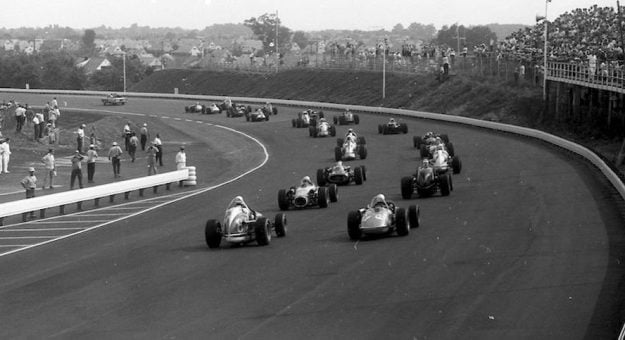HARRISBURG, N.C. — As another year and another racing season quickly approach the checkered flag, let’s venture into the archives where we recently discovered “breaking news” from 58 years ago this month.
The racing landscape in the eastern United States began to change, both literally and figuratively, just before Christmas in 1964.
From a story written by editor Chris Economaki and appearing on page three of the Dec. 23 issue of National Speed Sport News, race fans learned of plans to pave and reconfigure the legendary one-mile dirt track in Langhorne, Pa.
Co-owners Al Gerber and Irvin Fried said the primary reason for the change was a decline in the number of dirt-track cars competing on the United States Auto Club championship trail.
Gerber and Fried said the improvements to Langhorne Speedway would cost $250,000 and would include new safety fencing around the entire track. While a concrete wall was to be built in some sections, a majority of the rail was to be constructed of steel with steel posts.
In detailing the reconfiguration, Economaki wrote: “It will be changed from its present circular shape to the general contour of a capital letter D, which involves the use of a backstretch straight, linked to the front half of the old circular mile by two 500-foot radius turns and two short straightaways. The grandstand and pit areas will remain unchanged.
“The track width will vary from 50 to 60 feet, with the two 500-foot turns being banked six and a half feet. The backstretch will be elevated and a hump in the infield will be removed to provide the fill for the elevation of the straight.”
The story concluded by noting earth-moving equipment was already on the grounds and that the target completion date was June 1, 1965. Originally known as New Philadelphia Speedway, Langhorne Speedway opened in 1926 and was quickly nicknamed “The Big Left Turn” because of its unique circular layout.
The National Open on Sunday, Nov. 11, 1964, ended up being the final race on Langhorne’s dirt surface, and Fred Adam, of Kutztown, Pa., won the 100-mile sportsman stock-car race.
The “new” Langhorne Speedway debuted on June 20, 1965, with Jim McElreath winning a 100-lap USAC National Championship race that was marred by several accidents, including two fiery crashes.
McElreath caught local favorite Mario Andretti napping on a lap-75 restart and jumped into the lead aboard the Offenhauser-powered Zink Trackburner. He led the rest of the race as Andretti settled for second with Lloyd Ruby third. The reconfigured Langhorne track operated only six more years as the property was eventually sold to developers and the final race was run on Oct. 17, 1971.
• Exiting the archives: Tony Stewart’s recent experience behind the wheel of an NHRA Top Alcohol dragster reminded us of 1993 when John Andretti drove the Taco Bell Express Top Fuel dragster owned by former Major League Baseball player Jack Clark.
Andretti reached the semi-finals in his NHRA national event debut at Atlanta Dragway.
• A NASCAR Cup Series crew chief receives a four-race suspension when his race car loses a wheel. Meanwhile, a Cup Series driver receives a one-race suspension for losing his cool and using his race car as a dangerous weapon.
That’s absolutely absurd and NASCAR needs to do better. Officials should think long and hard about the severity of those penalties during the winter months.
• Dirt late model superstar Jonathan Davenport gets our vote as the 2022 Driver of the Year.
• Thank you to Kenny Schrader, Buzzie Reutimann, Bob Sargent, Dennis Erb Jr., Hurley Haywood, Jason Sides, Jordan Anderson and Ryan Preece for allowing us to share their stories with SPEED SPORT readers over the course of the year.
We also explored 70 years of the Mobil 1 Twelve Hours of Sebring and the 100th running of one of our favorite events, the Pikes Peak Hill Climb.
• Hope everyone has a merry Christmas and a happy new year.
